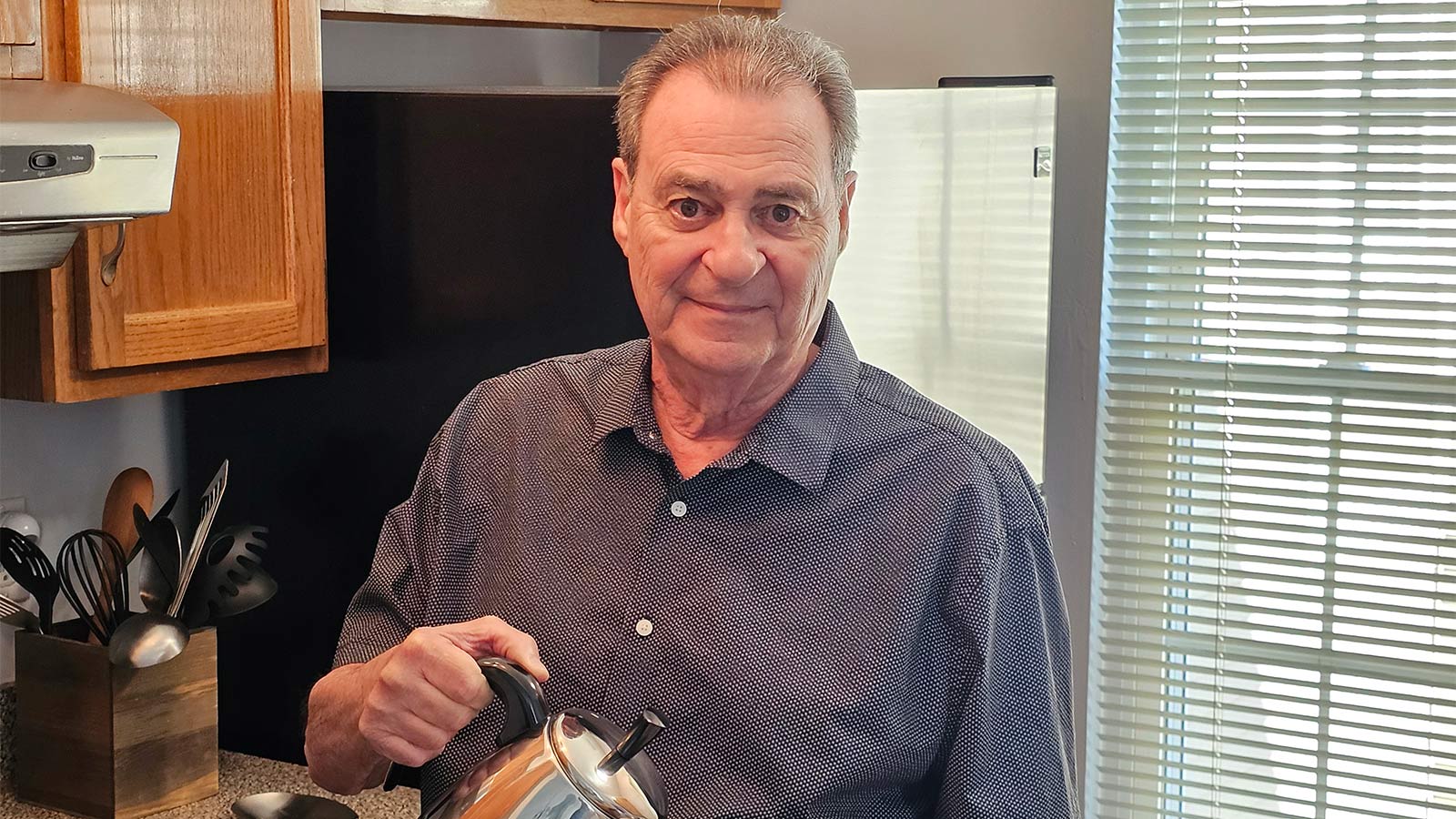Mitral Valve Surgery Opens Doors for Improved Quality of Life
Virtua cardiothoracic surgeons use advanced, minimally invasive procedures to treat mitral valve conditions, keeping you and your blood headed in the right direction.
By Kirk McMurtry, MD, Cardiothoracic Surgeon – Virtua Cardiothoracic Surgery
Did you ever wonder what your health care providers are listening for when they place their stethoscope on your heart?
Among other things, they’re checking the sound your heart’s valves make as blood flows through them. An unusual sound, called a murmur, could be a sign of a problem with your mitral valve—the set of “double doors” that controls blood flow from your left atrium to your left ventricle.
Mitral valve disease is quite common, especially as we get older. Valve disease often progresses slowly, and symptoms can be treated with medication and lifestyle changes. Eventually, though, you may need surgery to repair or replace the valve.
Stretched or Stuck
The mitral valve has two flaps, or leaflets, that normally open freely and close tightly during each heartbeat.
There are two main types of mitral valve disease. Regurgitation occurs when the leaflets don’t close tightly and allow blood to leak from the ventricle back into the atrium. Regurgitation is often caused by mitral valve prolapse, a condition where the leaflets stretch more than normal and they bulge like a parachute into the atrium.
With mitral valve stenosis, the leaflets can become stiff and narrow, limiting blood flow. The main cause of mitral stenosis is rheumatic fever, a complication of strep throat. Calcium buildup around the valve ring due to age also can cause the leaflets to stiffen.
Mitral valve disease can develop slowly, and you may feel fine for years. Over time, however, you may develop irregular heart rhythms, pulmonary hypertension, an enlarged heart or block clots, and have a higher risk for heart failure.
Seeing your doctor regularly can help us spot a valve issue early and set up a plan of care.
Minimally Invasive Treatments
Those with mild valve disease may not need treatment. However, if your symptoms worsen, your doctor may suggest surgery. Options include:
- MitraClip: A tiny clip placed at the end of a catheter is threaded through the blood vessels in the heart. The clip clamps the leaflets of the mitral valve into a more secure position when they're closed, but still allows the valve to open and function.
- Transcatheter mitral valve replacement (TMVR): A catheter is threaded through an artery to insert a new mitral valve inside your heart. Once opened with a special balloon, the new valve pushes aside the old one and begins to work immediately.
- Minimally invasive surgical mitral valve repair (mini-MVR): The surgeon trims excess tissue from the valve flaps to help them seal tightly, adds a ring-like collar at the base of the valve for support and stabilization, or enhances the connections of the valve to the heart.
- Balloon valvuloplasty: A balloon placed on the tip of a catheter is guided through the blood vessels to the valve. The inflated balloon expands the leaflets, allowing them to open and close more freely.
We are able to perform many valve procedures minimally invasively, without having to make a large incision in the chest. Patients usually notice the benefits right away, recover more quickly, and have an improved quality of life.
Keeping You—and Your Blood—Headed in the Right Direction
Virtua heart specialists use advanced, minimally invasive procedures like TAVR and MitraClip to treat valve disorders and restore your quality of life.
Performed with only a few small incisions, sometimes aided by the daVinci Robotic Surgical System, our interventional cardiologists and cardiac surgeons can repair or replace valves without separating your breastbone or stopping your heart, resulting in less pain and a quicker recovery.
Request an appointment with one of our heart valve specialists.
There's So Much More to Explore
Discover expert insights, inspiring stories, health tips, and more by exploring the content below!

HeartTalk Magazine
Inside Look at Blood Vessels Aids PAD Treatment
Denise Davis: Pay Attention to Your Heart Health

Sweet Music: Trust, Teamwork Save Justin from Heart Attack

Complex Heart Surgery Nets James a Lifelong Friend

8 Key Steps to Better Blood Pressure Control
Signs You Should Get Treated For Vein Problems

One New Heart Valve Saves Two Lives in the Tritten Family
What You Need to Know About Heart Failure

6 Numbers Key to Keeping Your Heart Healthy

Five Mindfulness Tips That Can Help Heal Your Heart

Watchman Heart Device: a Technological Breakthrough for Blood Clot Prevention

Albert's Emergency Cardiac Surgery Is a 'Story of a Lifetime'

Love Your Heart: Essential Care Tips for Every Stage of Life

How Do I Measure My Blood Pressure at Home?

How Do I Improve My Cholesterol Levels?

3 Ways to Reduce Your Stroke Risk

How the Unique Stages of a Womans Heart Affect Her Health

Can Your Gut Health Affect Your Heart?
Advanced Heart Failure Therapies Get Bernadine Back to Full Speed

Keeping the Beat: Advanced Heart Surgery for Aortic Aneurysm

Heart-Healthy Summer Recipe: Hummus and Veggies

4 Delicious Heart-Healthy Recipes Perfect for Summer

Heart Healthy Summer Recipe: Dessert Parfait

Heart-Healthy Summer Recipe: Pear and Walnut Salad

Heart-Healthy Summer Recipe: Terrific Turkey Burgers
Atrial Fibrillation and Stroke: What's the Connection?
Heart Tests Your Doctor May Order
Managing Pregnancy for Mothers With Heart Conditions

Heart Healthy Recipe: Basil Pesto Pasta With Seared Vegetables

Heart Healthy Recipe Chocolate Avocado Chia Pudding
Keep Your Heart Rhythm in Check With Your Smartwatch
Mind Your Meds for Blood Pressure Risks
Magic Pill for Heart Health? Cut 300 Calories a Day
3 Smart Ways to Boost Your Heart Health
3 Best Exercises For Heart Health

Get Your Heart Pumping With These 25 Workout Songs
Your Chest Pain: Heartburn, Heart Attack, or Something Else?
3 Heart Healthy Recipes to Win Valentines Day
How Work and Home Stress Can Affect You
Why Improving Your Health Is Going To The Dogs And Cats
Why Younger Women Need Start NOW To Safeguard Their Hearts From Heart Attacks
Can You Die of a Broken Heart?
Get to the Bottom of Blood Pressure Numbers
Mitral Valve Surgery Opens Doors for Improved Quality of Life
6 Healthy Habits to Start in Your 20s for Better Lifelong Health
Do You Have a Fatty Heart?
Get Pumped! Assist Devices Can Improve Heart Failure Symptoms
A Cardiologists Advice on Heart-saving Emergency Cardiac Care
Virtua Doctor’s Experience Is a Warning for All About COVID-19 and Strokes
You May Feel Fine, but Gregory Says "Don't Skip Your Medical Care"
In Sickness and in Health: Couples Often Share Heart Disease Risk
"Reduce Your Heart Disease Risk With a Plant-based Diet"
Hybrid Robotic Heart Surgery and Valve Replacement Restores Quality of Life
Can Marijuana Hurt Your Heart Health?
6 Tips for Restoring Your Heart Rhythm
Eat Smart for Your Heart
Cardiac Rehab: Strengthening Your Heart After Leaving the Hospital
Your Heart Needs A Good Nights Sleep
Are You at Risk for AAA—the Silent Killer?
The Cardio Oncology Team Protects Your Heart During Cancer Treatment
Get Relief From Painful Varicose Veins This Summer
Exercise Your Way to a Stronger Heart
Fish Oil: A Good Catch or a Scam?
My Heart Seems to Skip a Beat - Should I Be Worried?
Menu Planning? Try These 5 Heart-smart Substitutions

5 Health Risks Tied to Weight

Heart-Healthy Recipe: Maple Orange Salmon With Mango Salsa
Do Not Wait to Get Help When a Stroke or Heart Attack Strikes
4 Reasons Why Heart Patients Should Follow COVID 19 Safety Guidelines

